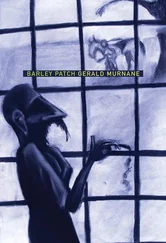The author who was mentioned early in the previous paragraph and will be called henceforth the narrator begins his task by reporting that a certain man who will be called henceforth the chief character has been troubled, at different periods of his life, by images of certain details of a certain forest that he visited several times as a child. The chief character, who is himself an author of fiction, wrote, twenty years before, a piece of fiction in which the same forest was mentioned often. After he had written the fiction, which was later published, he supposed that he would never again be troubled by images of certain details of the forest, one margin of which was sometimes visible from the district of mostly level grassy countryside where he had lived for several years as a child. (Almost all of the forest was destroyed more than fifty years ago, and the land that had once been covered by forest was turned into dairy farms and roads and townships, but that was not the reason for the man’s supposing what he supposed. The man was more likely to be troubled by images of things if they were no longer visible.) In recent years, however, the man was troubled by images of certain forest plants that he had handled as a child and of a certain bird that he had seen as a child when it flew across a clearing in the forest. These were some of the same images that had caused him, twenty years before, to write passages of fiction for which the setting, so to call it, is the forest, but the images troubled him, on the later occasion, differently, as though the meaning that they yielded earlier was by no means all of the meaning that they were capable of yielding.
One evening during his early childhood, he had played at the edge of the forest with his cousins, the sons and daughters of an older sister of his mother. This woman and her husband and children lived in a clearing in the forest. He and his cousins had chased one another and had hidden from one another at the edges of the clearing, but he had run further into the forest than had they and had hidden there and had not been found but had given himself up when the game had ended. He was not afraid of the forest. He thought of forests, and especially of clearings in forests, as places of refuge and of safety. While he had run from his cousins, he had clutched or had tugged at several sorts of forest plant. The spike-like foliage of one sort of plant had pricked his palms whenever he clutched at it, and the sharp-edged leaves of another plant had cut into the skin of his fingers and had drawn blood whenever he had let the leaves run through his hands. His memory of these simple-seeming events and of the sight reported in the following paragraph were all that urged him to write, but their urging was insistent.
On a certain afternoon in summer, perhaps even earlier than the evening mentioned above, he had been with his father in a clearing in a dense part of the forest. His father was felling trees to be stored and dried for firewood. A brightly coloured bird flew across the clearing, and at one point in its flight the sunlight seemed to flash from the bird’s plumage. Long afterwards, and long after the forest had been mostly destroyed, he still recalled the seeming flash of sunlight on the feathers of the bird which was a sacred kingfisher, so his father had said. The predominant colours of the bird were royal blue and a colour that might have been cream or white but had seemed, when the sunlight flashed on it, silver-grey.
I have mentioned already in these paragraphs the feeling that seems to emanate from certain image-objects. I ought to mention also the counter-feeling, so to call it, with which the intending author must respond if his work of fiction is to be written. Despite his having, in the beginning, a few mental images and intimations, the author, by going on with his writing, declares his confidence in these sparse signs and in the many-faceted whole that surely has them at its visible junctures. To use the example of the author mentioned in these paragraphs, I might declare that his setting out to write as he does is a demonstration of his trust in the forest or, rather, the image-forest.

Trust in imagery can serve a writer well, but quite another sort of trust is often needed to sustain a writer of fiction, especially the sort who make up our little band. Admittedly, one or two of us claim hardly to think of their readers but to draw inspiration from the task itself: to keep often in mind the splendid intricacy of the finished text and even to feel, as they complete page after page, that their writing expands their sense of who they are and of how much meaning can be found in a few meagre-seeming experiences. We are more likely, though, when we discuss the matter, to confess that each of us develops while he writes an image of a personage deserving to be called the implied reader. We are sometimes surprised to be reminded by one another that this personage is seldom of the sort whose name appears often in the dedication of a book; is seldom a parent or a wife or a child. The personage, so to call her — and we, being males, make her out almost always to be female — is someone scarcely known to us. For a few of us, she is by definition always unknowable except for the one fact that she will one day read our words with discernment. Some see her image clearly and can report such details as the colour of her hair; others sense her only as a presence unlikely ever to reveal herself to their inner eye, so to call it. All of us agree on two matters. First, we have no wish to meet up with her; our being able to write as we do depends on our never so meeting. Even were we to hear it rumoured that this house accommodates not only a hundred kinds of writer but numbers of kinds of what might be called writerly persons including, in some remote corridor of the farthest wing from here, a few females admirably qualified to serve as ghostly but discerning readers of texts still in the writing — even then, none of us would go any way towards seeking out those few and would surely be even more careful afterwards to avoid the groups of female persons sometimes seen strolling in the grounds around this wing.
The second matter on which we all agree is that our implied readers are utterly to be trusted.

The following paragraphs will report much of what will surely go into the making of the piece of fiction the beginnings of which were reported in the section before the previous section.
The chief character had never learned the correct sequence of the places where his mother had lived before her marriage. He knew that she had been born in a small town on the plains that occupy much of the south-west of his and her native state and that her father had died before her birth. He knew that she and his father had been living in rented rooms in a western suburb of the capital city when he, their eldest child, had been born. At some time during the eighteen years between, she had lived at several addresses in the largest provincial city in the south-west of the state; she had even lived at some time in the largest forest in the south-west, a forest that was later destroyed almost wholly. She was the youngest of nine siblings, most of them females, and by the time when she was aged in her teens, most of the siblings had left home.
At some time early in his mother’s childhood, her widowed mother had remarried. Her new husband was a man who had been previously unmarried. The chief character had often, as a child, been taken to visit this man and his wife and had called him, for convenience, Grandfather although his, the child’s mother, had explained that the man was not his true grandfather. He, the child, had neither liked nor disliked the man, although the child’s mother had told the child that the man had often been drunk in earlier times and had sometimes locked her and the younger of her siblings out of their house and had threatened them with violence.
Читать дальше










